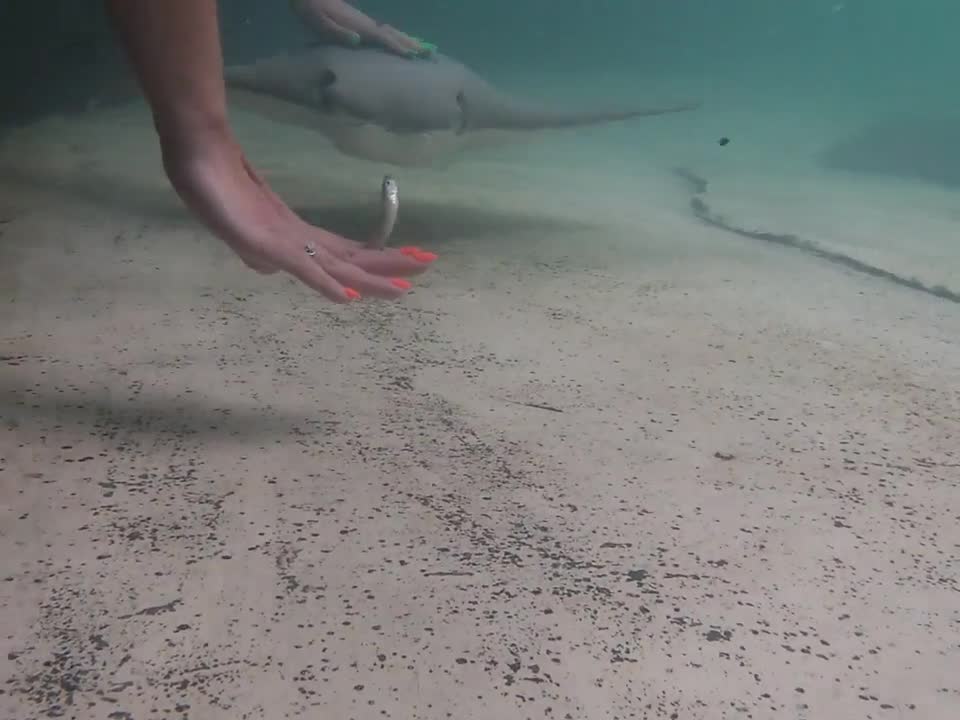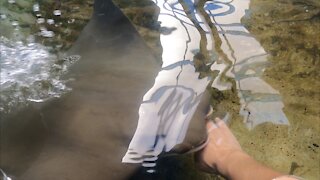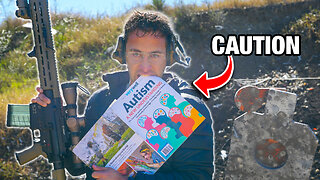Premium Only Content

Feeding the Stingrays
Best location to feed Stingrays and touch them in Stingray Bay.
Stingray Bay is located between Helzberg Penguin Plaza and Discovery Barn and open year-round. During the hotter months of the year, the sides are opened and overhead fans keep the exhibit cooled for guests. When it’s colder, the sides can be closed and the building heated. The touch tank itself contains 20,000 gallons of water and built at a height that provides access to everyone. The center of the pool is deeper, so animals that choose not to be touched have a place to rest. The interior of Stingray Bay also features a mural created by Kansas City Art Institute students.
One of the exhibit’s most important features is located behind the scenes. A state-of-the-art water filtration system ensures that the tank’s water stays clean and clear, providing a healthy habitat for its inhabitants. The project cost approximately $3.6 million to complete, funded by private donations and the Zoological District.
Meet the Animals
Guests have the opportunity to dip their hands into a shallow pool and discover the unique texture and movement of two species of stingrays – 20 cownose rays and eight southern stingrays. Cownose rays have a unique feature—long, pointed pectoral fins that separate into two lobes in front of their high-domed heads. A crease in the lobes and a notched head create a cow-nose likeness that gives these rays their name. Cownose rays live in shallow water and prefer to swim near the surface.
Southern stingrays have large, flat, diamond-shaped disks without distinct heads. Their large fins can grow more than 6 feet wide and are used to stir up the sand to find prey or hide from their predators. Southern stingrays are known forburying themselves in the sand with only their eyes and spiracles visible.
In addition to stingrays, the tank is also home to a dozen of the smallest species of sharks, whitespotted bamboo sharks. These sharks are known as “cat sharks” because the barbels, or sensory organs near their mouths, resemble cat whiskers. These small, nocturnal sharks have muscular pectoral fins used to crawl along the ocean bottom.
-
 2:34
2:34
ScoupaJhon
5 years agoDubai Aquarium
1761 -
 2:19
2:19
Life in the Canadian Wilderness 12 years
3 years agoSwan Feeding
94 -
 1:55
1:55
Jewels115
4 years agoHand Feeding Shrimp to Stingrays
33 -
 0:20
0:20
donf151
3 years agoFeeding goats
32 -
 0:08
0:08
rhshajib
3 years agoBird feeding
15 -
 21:39
21:39
Nikko Ortiz
3 days agoI Take A North Korean Shooting
44.4K8 -
 LIVE
LIVE
Lofi Girl
3 years agolofi hip hop radio 📚 - beats to relax/study to
197 watching -
 2:14:13
2:14:13
FreshandFit
13 hours agoShe Was Given Extravagant Gifts And STILL Friendzoned Him +EXPOSED
188K33 -
 1:16:07
1:16:07
Man in America
11 hours agoOperation Gladio: The CIA, Mossad & City of London’s Plan for a New World Order
25.5K27 -
 2:11:41
2:11:41
Badlands Media
12 hours agoDEFCON ZERQ Ep. 016: Shadow Governments, Ancient Tech & the Spiritual War for Humanity
81.9K58